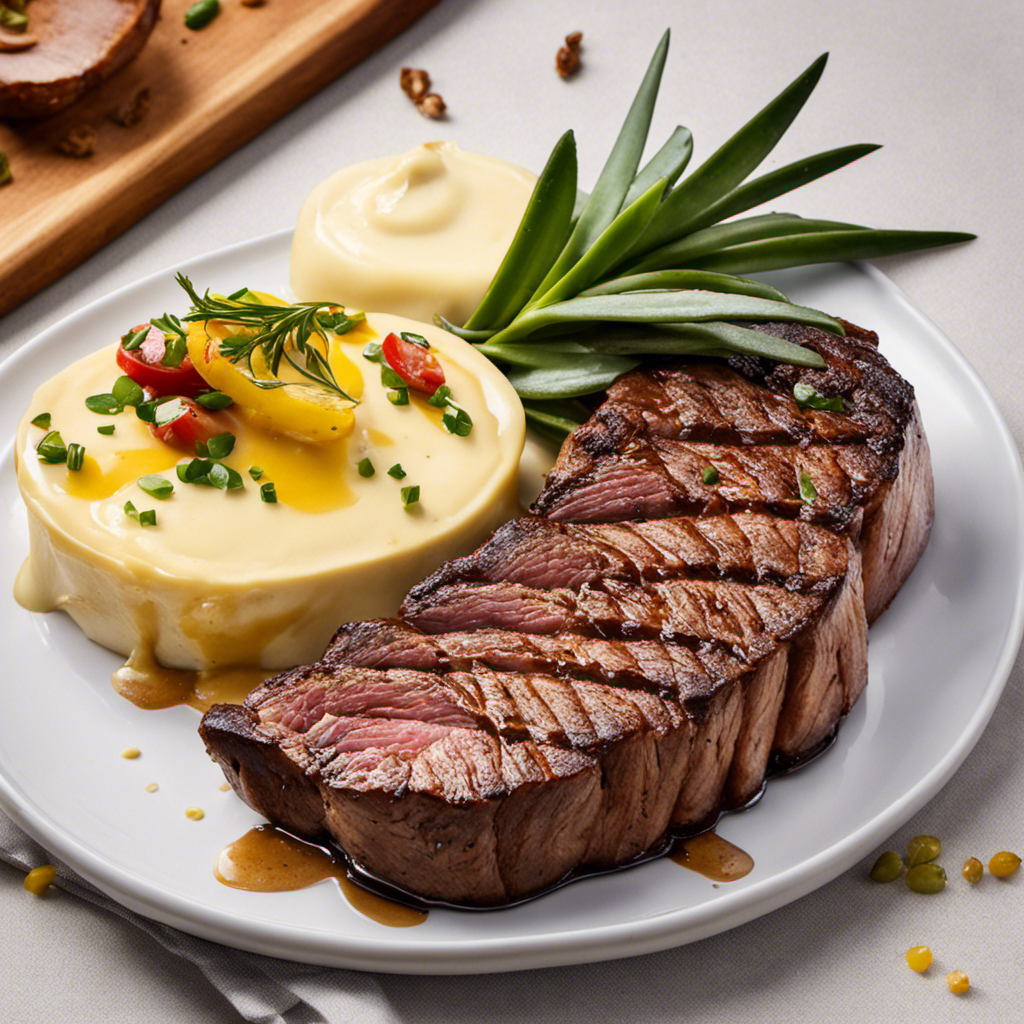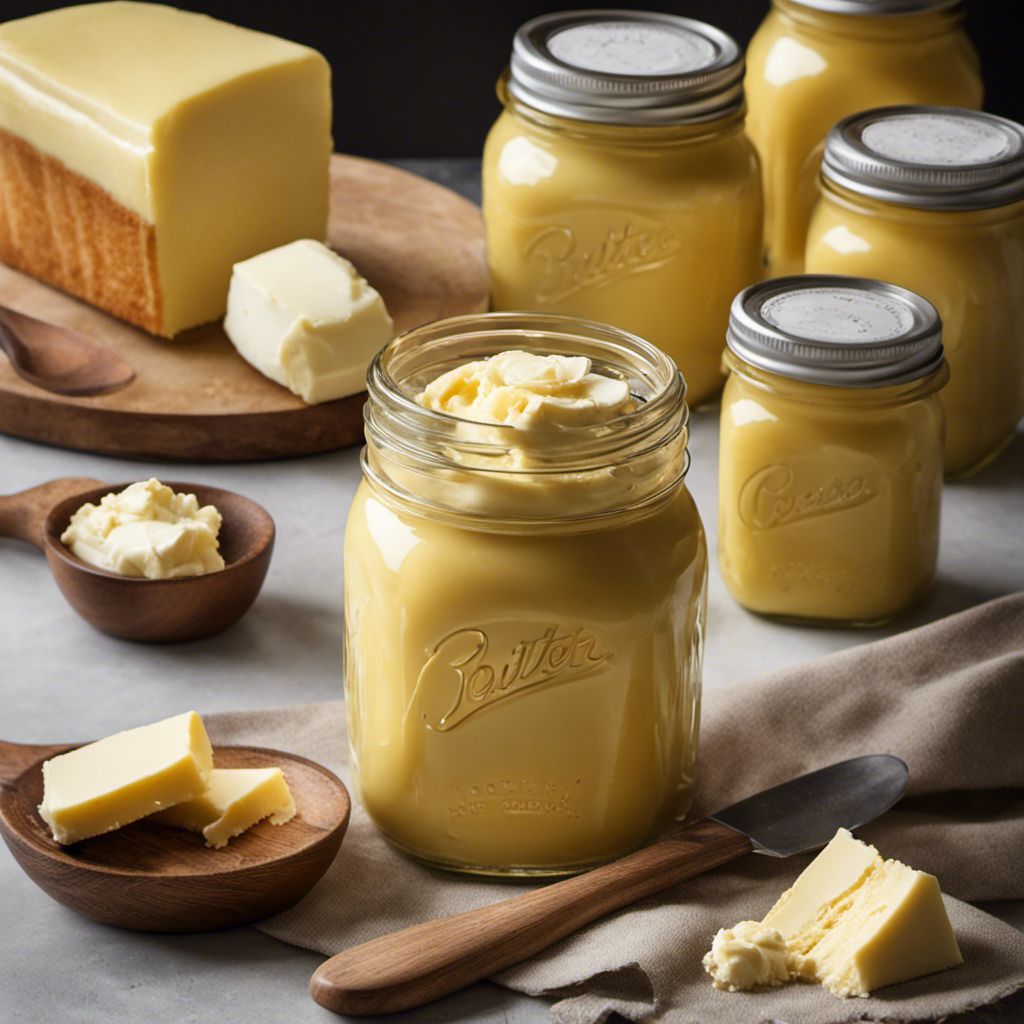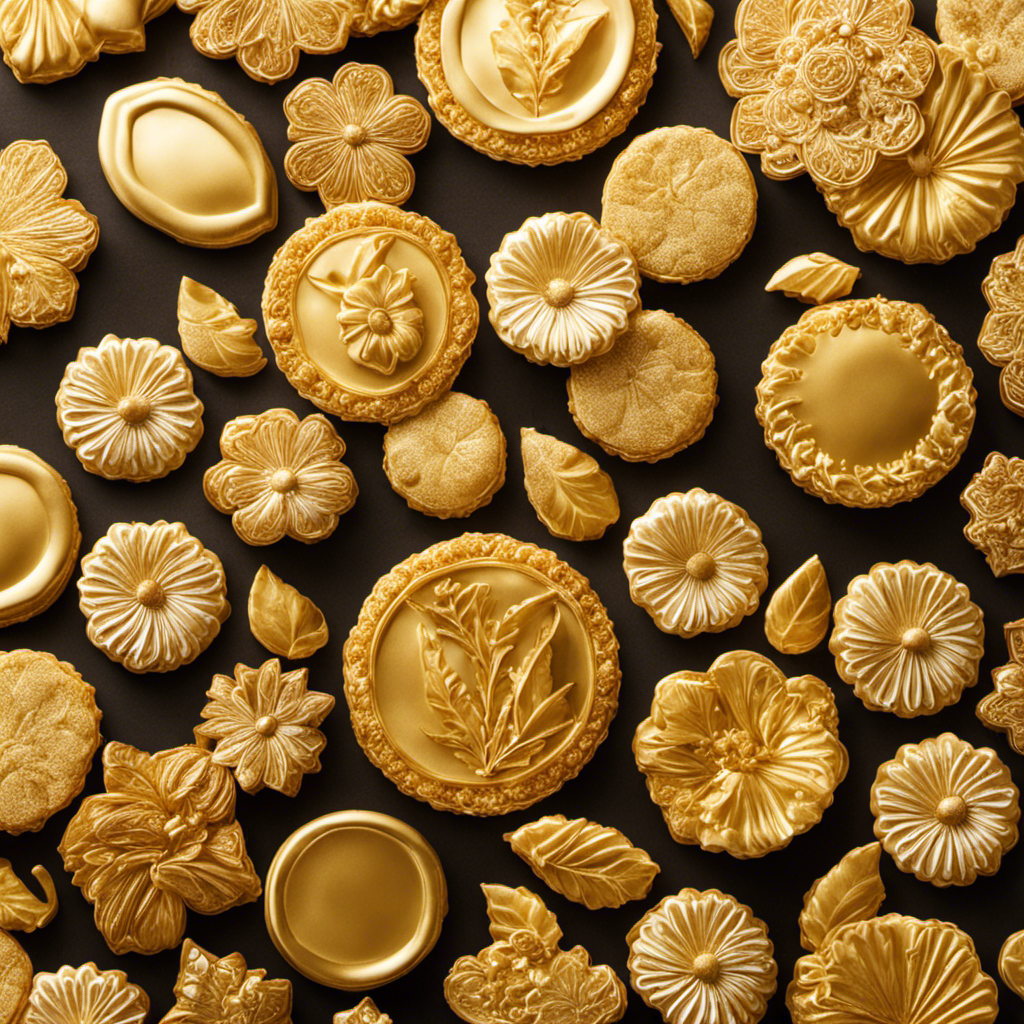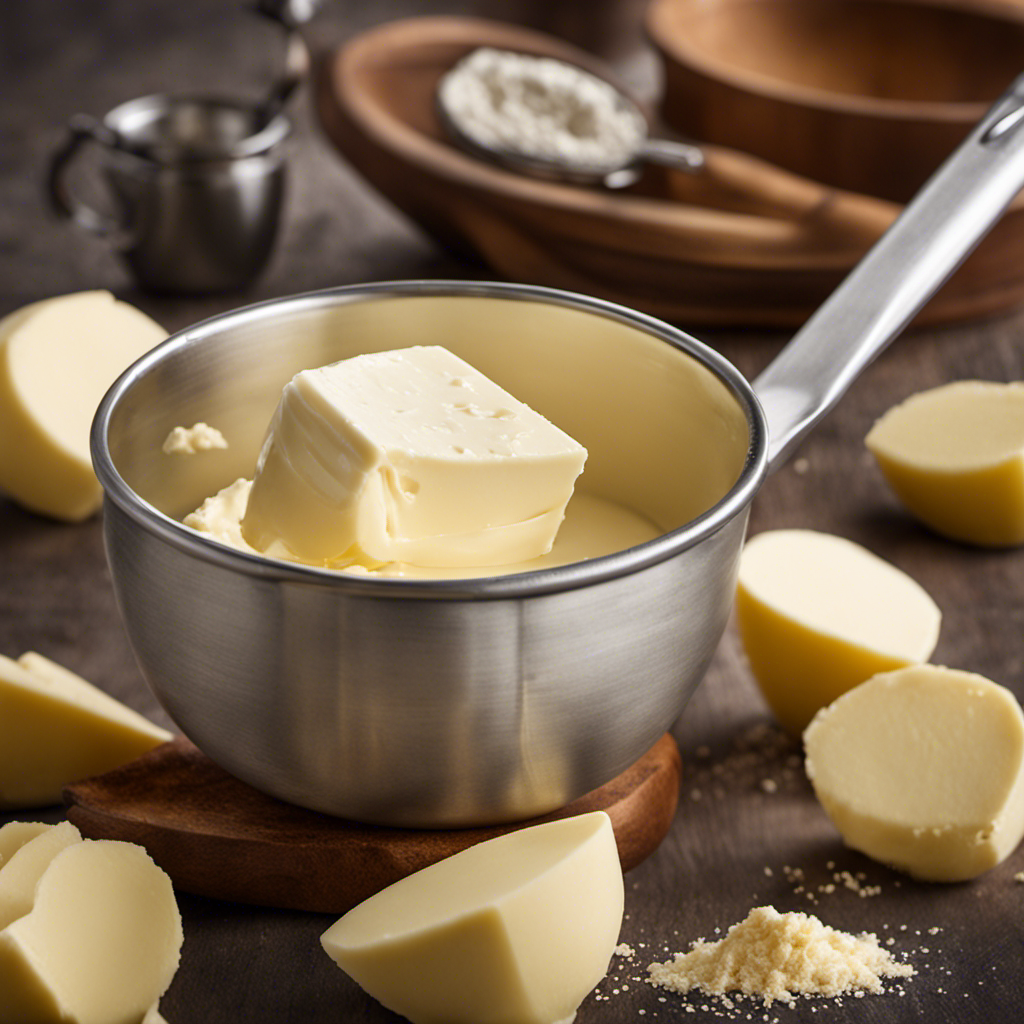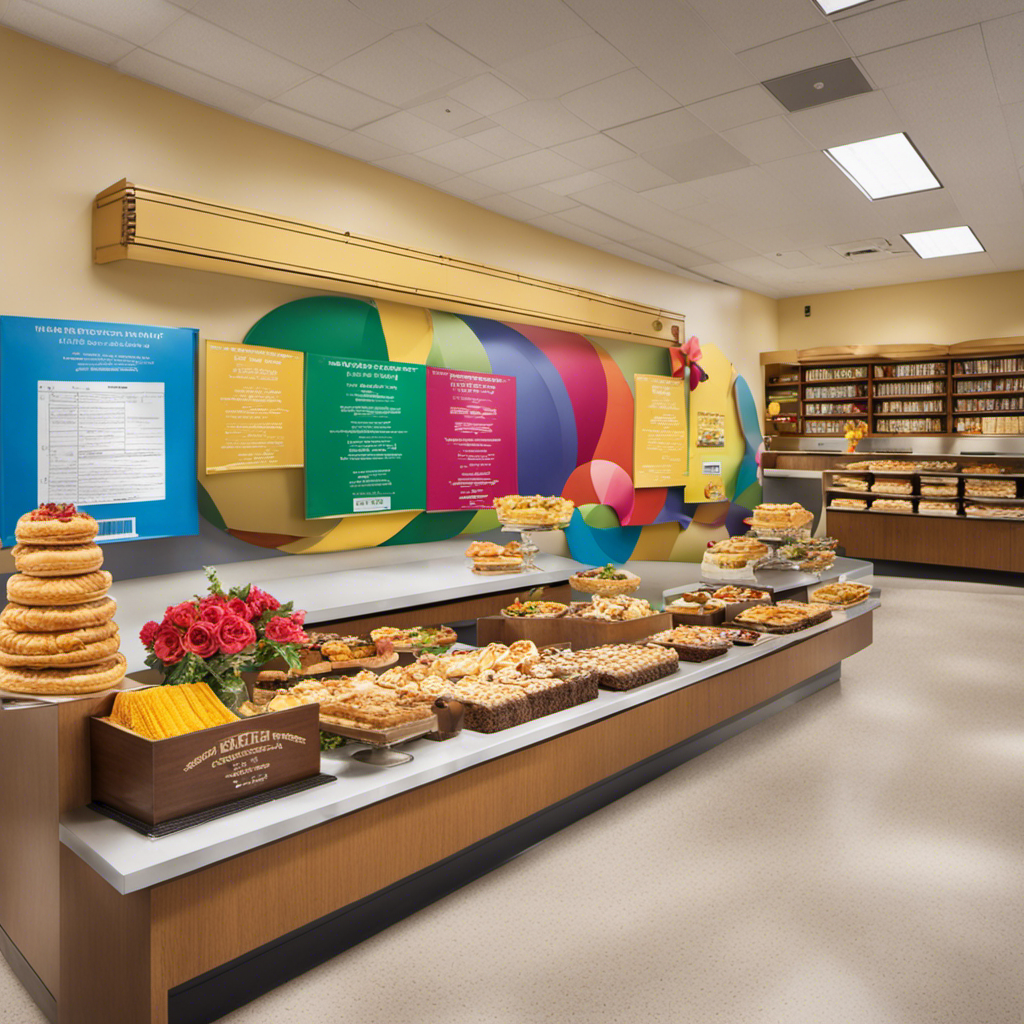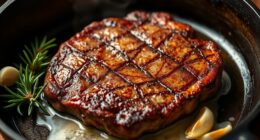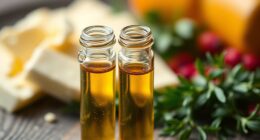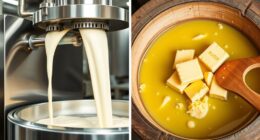Did you realize that a well-seasoned compound butter can elevate your steak from good to unforgettable? Picture indulging in a succulent, tender steak that is imbued with the savory tastes of herbs and spices, all thanks to a straightforward butter blend.
In this article, I will guide you through the process of making your own compound butter for steak, ensuring that every bite is bursting with deliciousness.
So, let’s get started and elevate your steak game to a whole new level.
Key Takeaways
- Choose high-quality, unsalted butter to allow other flavors to shine through and control salt levels.
- Experiment with different herbs, spices, and citrus zest to create flavorful compound butters.
- Shape the compound butter into logs, balls, or pats for easy storage and use.
- Spread the compound butter evenly over the surface of the steak or insert slices into small pockets to enhance the flavor, richness, and juiciness of the meat.
Choosing the Right Butter
You’ll want to choose the right butter to create the perfect compound butter for your steak. When it comes to selecting the butter, quality is key. Opt for a high-quality butter that is made from cream and has a rich, creamy texture. Look for butter that is unsalted, as you can control the amount of salt in your compound butter later on. Using unsalted butter also allows the flavors of other ingredients to shine through.
The benefits of using compound butter are plenty. Not only does it add a luxurious and flavorful touch to your steak, but it also helps to keep the meat moist and tender during cooking. Plus, you can customize the flavors to your liking by adding herbs, spices, or even garlic to the butter.
Selecting the Perfect Herbs and Spices
When it comes to creating delicious dishes, the right combination of flavors can make all the difference.
In this discussion, we will explore the best flavor combinations that can elevate your culinary creations to new heights.
Additionally, we will delve into the exciting world of experimenting with herbs, discovering how these aromatic plants can add depth and complexity to your dishes.
Get ready to take your cooking skills to the next level as we uncover the secrets to creating unforgettable flavor profiles.
Best Flavor Combinations
To achieve the best flavor combinations for your compound butter, start by experimenting with ingredients like garlic, herbs, and citrus zest. These simple additions can elevate the taste of your butter and take your steak to a whole new level.
Here are three unique compound butter recipes that pair perfectly with various meats:
-
Smoky Chipotle Butter: Add a smoky kick to your steak by mixing in some chipotle peppers, smoked paprika, and a squeeze of lime juice. This butter works well with grilled chicken too.
-
Herb and Garlic Butter: Create a classic combination by blending fresh herbs like rosemary, thyme, and parsley with minced garlic. This versatile butter is great for not only steak but also roasted lamb or baked fish.
-
Citrus and Chili Butter: For a tangy and spicy twist, mix in some citrus zest, such as orange or lemon, along with a pinch of chili flakes. This butter pairs beautifully with grilled shrimp and scallops.
With these delicious compound butter recipes, you’ll never have a dull meal again.
Experimenting With Herbs
Don’t be afraid to get creative and try out different herbs in your culinary experiments. When it comes to experimenting with different meats, herbs play a crucial role in enhancing the flavors and elevating the overall dining experience.
The right combination of herbs can take a simple dish to new heights, adding depth and complexity to the flavors. But it’s not just about pairing herbs with meats; vegetables can also benefit from the addition of herbs.
For example, roasted vegetables can be transformed into a mouthwatering side dish with the addition of fresh thyme or rosemary. Herbs like basil or cilantro can bring a burst of freshness to a summer salad.
Preparing the Butter
Mix the softened butter with your desired herbs and spices to create a flavorful compound butter for your steak. It’s a simple yet effective way to elevate the taste of your meat.
But what if you don’t have melted butter on hand? Don’t worry, there are alternatives that work just as well. Here are three options to consider:
-
Olive oil: Replace the melted butter with extra virgin olive oil for a healthier twist. The rich, fruity flavors of the oil will complement the herbs and spices perfectly.
-
Avocado puree: For a creamy and vegan-friendly option, blend ripe avocado with your chosen seasonings. The smooth texture and buttery taste will add a luxurious touch to your steak.
-
Coconut oil: If you’re looking for a tropical twist, melt some coconut oil and mix it with your herbs and spices. The subtle coconut flavor will add a unique and delicious element to your compound butter.
Incorporating Flavors Into the Compound Butter
When it comes to incorporating flavors into compound butter, finding the best combinations is key. As someone who has experimented extensively with different flavors, I can confidently share my expertise on this topic.
Additionally, I will provide valuable tips on how to store your compound butter to ensure it stays fresh and flavorful for as long as possible.
Best Flavor Combinations
For the best flavor combinations in compound butter for steak, try using ingredients like garlic, herbs, and lemon zest. These unique pairings will enhance the flavor of your steak and elevate your dining experience.
Here are three delicious combinations to try:
-
Garlic and Herb: Mix minced garlic, chopped fresh herbs like rosemary and thyme, and a pinch of salt into softened butter. This combination adds a savory and aromatic touch to your steak.
-
Lemon and Pepper: Zest a lemon and combine it with freshly ground black pepper and softened butter. The tangy zest and the subtle heat from the pepper will complement the richness of the steak.
-
Blue Cheese and Chive: Crumble some blue cheese and mix it with chopped chives and softened butter. This combination adds a creamy and tangy flavor to your steak.
Butter Storage Tips
To keep your butter fresh and prevent it from spoiling, store it in an airtight container in the refrigerator.
Proper butter storage is essential for maintaining its quality and preventing it from going bad.
When it comes to butter storage containers, opt for ones that are specifically designed for this purpose. Look for containers that have a tight seal to keep out air and moisture, as these can cause the butter to spoil. Additionally, choose containers that are made of materials that won’t react with the butter, such as glass or food-grade plastic.
Shaping and Storing the Butter
After blending the ingredients together, you can shape the compound butter into a log and wrap it tightly in plastic wrap for easy storage. This method not only helps preserve the flavor but also makes it convenient to slice off portions as needed.
Here are some butter shaping techniques and long-term butter storage tips:
-
Log Shape: Roll the butter mixture into a cylinder shape using plastic wrap, parchment paper, or a silicone mold. This shape is perfect for slicing off rounds or discs of butter.
-
Butter Balls: Use a melon baller or a small scoop to portion out individual balls of compound butter. This is great for adding a dollop of flavor to dishes like grilled vegetables or baked potatoes.
-
Butter Pats: If you prefer a more traditional look, use a butter mold or pat the mixture into a rectangular shape. This is ideal for spreading directly onto bread or melting onto steaks.
Remember to store the shaped compound butter in an airtight container or wrapped tightly in plastic wrap in the refrigerator or freezer for long-term storage.
Applying the Compound Butter to Steak
When grilling steak, simply slice off a round of the compound butter and let it melt on top for a burst of flavor. Using compound butter on steak offers numerous benefits.
Firstly, it adds richness and depth to the meat, enhancing its natural flavors. Secondly, the butter helps to keep the steak moist and juicy throughout the cooking process.
To evenly distribute the compound butter on the steak, there are a few techniques you can employ. One method is to simply spread the butter evenly over the surface of the steak before grilling or searing it. Another technique is to create small pockets or slits in the meat and insert slices of the compound butter, allowing it to melt into the steak as it cooks. These methods ensure that every bite of steak is infused with the delicious flavors of the compound butter.
As we explore other delicious uses for compound butter, you’ll discover just how versatile and delectable this ingredient can be.
Other Delicious Uses for Compound Butter
One great way to incorporate compound butter into your meals is by spreading it on warm, crusty bread. The creamy, flavored butter adds a delicious touch to any bread, making it a perfect appetizer or side dish.
But that’s not all compound butter can do! Here are three more creative ways to use compound butter in your cooking:
-
Baking: Take your baked goods to the next level by incorporating compound butter into your recipes. Whether it’s a flaky croissant or a buttery pound cake, adding flavored butter can enhance the taste and texture of your treats.
-
Pasta dishes: Adding a dollop of compound butter to your pasta can transform a simple dish into a gourmet meal. The rich flavors of the butter meld with the pasta, creating a creamy and indulgent sauce that will impress your guests.
-
Grilled vegetables: Tossing grilled veggies with compound butter adds a burst of flavor and richness. The butter melts over the hot vegetables, creating a savory glaze that elevates the taste and makes them even more irresistible.
Incorporating compound butter into your cooking opens up a world of possibilities. Get creative and explore the endless ways to enjoy this versatile ingredient.
Frequently Asked Questions
How Long Can Compound Butter Be Stored in the Refrigerator?
The shelf life of compound butter in the refrigerator depends on proper storage. It can typically be stored for up to two weeks. It’s important to keep it tightly sealed to maintain freshness.
Can I Use Salted Butter Instead of Unsalted Butter?
Yes, you can substitute salted butter for unsalted butter in compound butter. The main difference is that salted butter already has salt added, so you may need to adjust the amount of additional salt you add.
Can I Freeze Compound Butter for Later Use?
Yes, you can freeze compound butter for later use. I often make a batch and store it in the freezer. It’s convenient to have on hand whenever I want to add extra flavor to my dishes.
What Are Some Alternative Herbs and Spices That Can Be Used in Compound Butter?
There are many alternative herbs and spices that can be used in compound butter to add a burst of flavor. Get creative and experiment with combinations like garlic and rosemary or lemon and thyme. It’s a versatile ingredient that can elevate any dish.
Can I Use Compound Butter on Vegetables or Grilled Seafood?
Yes, compound butter can be used on grilled vegetables and seafood. It adds flavor and richness to dishes. The best herbs and spices to use in compound butter for seafood are dill, lemon zest, and garlic.
Conclusion
In conclusion, crafting your own compound butter for steak is like adding a secret weapon to your culinary arsenal. By selecting the perfect combination of herbs and spices and incorporating them into creamy butter, you elevate your steak to new heights of flavor.
With a little creativity, you can shape and store this flavor-packed butter for future use. So go ahead, take your steak game to the next level and explore the endless possibilities of compound butter. Your taste buds will thank you.
